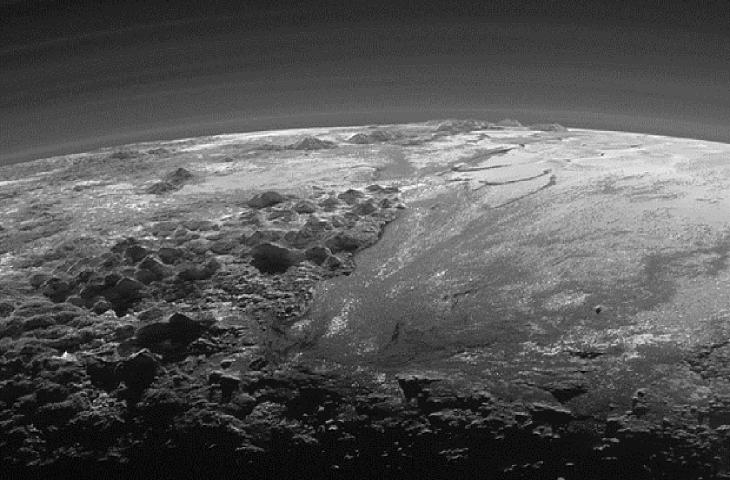MILAN – The latest photographs disclosed by NASA show incredible images sent to earth by the New Horizons probe. They offer an extraordinary panoramic view of Pluto, particularly of the zones called the Majestic Mountains and the Frozen Plains, shot 15 minutes after fly-by and revealing the presence of mountains 3,500 metres high and glaciated plains. These are breath-taking images, captured a few minutes after sunset on Pluto. The most impressive photograph, as reported by The Telegraph, was taken by the space probe, New Horizons, on July 14, this year, while moving at maximum proximity to the dwarf planet.
An infinite amount of data
The probe has performed a task of very great value to the world of science, collecting an infinite amount of data, which will require at least 16 months to fully reach the earth. The atmospheric images of the glaciers reveal an incredible variety of very complex surface characteristics, which will be available for scientists to study from now on: “Pluto shows us a diverse morphology and the complex processes associated with everything we have seen in the solar system up till now”, said Alan Stern, of the Southwest Research Institute (SwRI), Boulder, Colorado. “If an artist had painted this view of Pluto before our fly-by, I would probably have called the piece, ‘over the top’; however, the reality is right there before our very eyes”. The new data obtained by the probe have revealed the possible presence of dunes; streams of frozen nitrogen which flow out of the mountainous regions onto the plains and valleys, affected by materials which flow over the surface of the planet; images of chaotically confused mountains, reminding us of the disturbed surface of Europa, Jupiter’s natural satellite.
Comments from Jeff Moore and Stuart Robbins
"The surface of Pluto is as complex as that of Mars”, declared Jeff Moore, head of New Horizons Geology, “The mountains could be a nitrogen deposit, frozen within the zone called Sputnik Planum”. These are images which have gone round the world, thanks to a video uploaded: “This film grew out of the desire to show the public the most recent images sent by the New Horizons probe, testifying to the complexity of the surface of Pluto”, stated one of the makers of the video, Stuart Robbins, from the Southwest Research Institute at Boulder, “but the images received to date are just a taster for those captured by the probe and we cannot predict when the others will arrive. They will have a resolution which is seven times greater, so we will be able to see what other surprises Pluto has in store for us”.
by editorial staff











